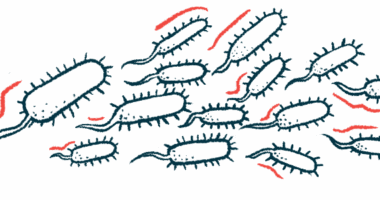Black Fingers and Dark Urine: Clear Signs Patient Had CAD

A middle-aged woman’s suddenly black fingertips and dark urine were telltale symptoms that she had developed cold agglutinin disease (CAD), according to scientists.
Her case was described by a team of Japanese researchers in the study, “Black fingers and dark urine: cold agglutinin disease,” published in QJM: An International Journal of Medicine.
CAD is a rare autoimmune condition in which the body’s immune system develops antibodies — cold agglutinins — that attack and destroy red blood cells (hemolysis) at low temperatures. Its symptoms often include anemia or low red blood cell counts, fatigue, and skin discoloration, known as acrocyanosis.
However, as seen with other rare disorders, CAD can be difficult to diagnose, due to its rarity and symptoms that may overlap with those of other conditions.
Now, researchers in Japan detailed the case of a patient who developed gangrene in her fingertips and dark urine — two key CAD symptoms — after being exposed to cold temperatures. Gangrene, in which skin can become blackened, is a condition characterized by the accumulation of dead, or necrotic, tissue due to the loss of blood supply.
The 55-year-old woman was admitted to the emergency department during winter after developing painful skin discoloration at the tip of the middle, ring, and little fingers in her right hand. Her black fingers had been preceded by pain and dark urine upon cold exposure.
A physical examination of her right hand revealed signs of digital gangrene, but no signs of skin hardening, small dilated blood vessels, or purple-colored spots and patches on the skin.
Lab tests showed she had low levels of hemoglobin — the oxygen-carrying protein found in red blood cells — at 6.9 grams per deciliter (g/dL; normal range: 12.1–15.1 g/dL).
The team also found the patient had high levels of lactate dehydrogenase and bilirubin, two hemolysis markers, as well as cold agglutinins in her bloodstream. A urine analysis also revealed the presence of blood. All these observations were consistent with a diagnosis of CAD.
Following the diagnosis, the necrotic tissue was surgically removed from her fingers, through a procedure known as debridement. This was followed by four courses of rituximab and bendamustine, a combination therapy sometimes used to treat CAD. The patient was then discharged.
In the following winter, she showed no signs of red blood cell destruction or gangrene in any fingers.
“In this case, the onset of the digital gangrene and dark urine after cold exposure led us to suspect … cold agglutinin disease,” the researchers concluded.







